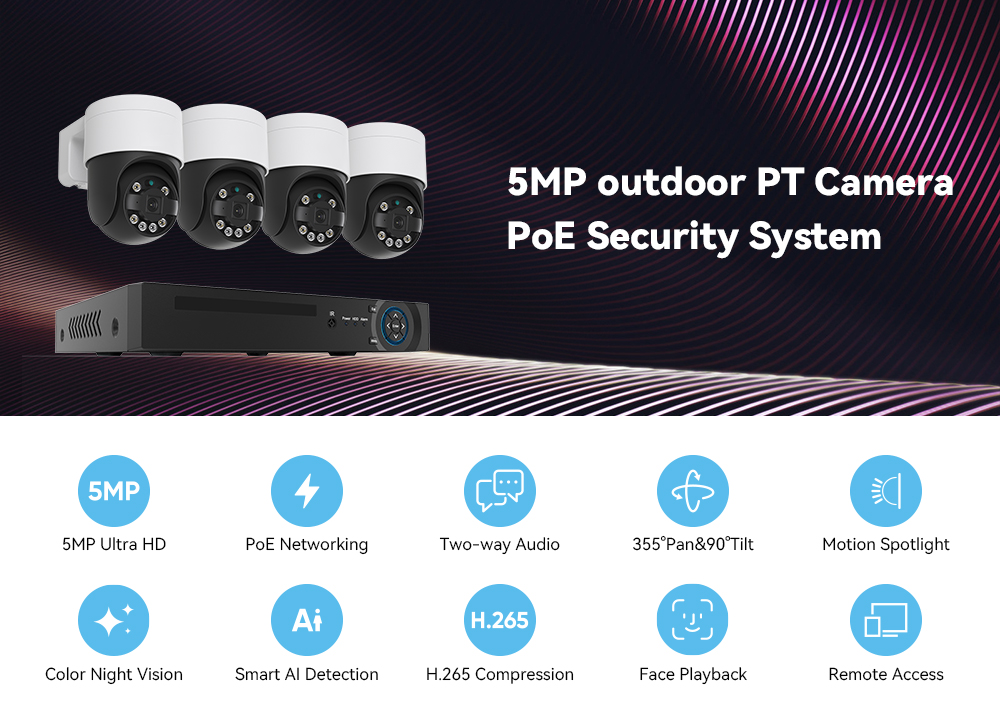Comparison Between Analog Cameras And IP Cameras
Technology is continuously advancing, and inventions are occurring at a rate we could never have predicted. Photography and cameras have evolved along a revolutionary route that gave rise to cinematography and filmmaking. Today, the globe has access to high-end equipment and sophisticated lenses that can zoom in and take epic photographs at unbelievable distances and with outstanding features such as colors, sharpness, clarity, contrast, and so on.
In the field of video surveillance, two main types of cameras are often used: IP cameras and analog cameras. We’ve outlined the key difference between these two cameras to assist you in selecting the best one for your security and surveillance needs.
Analog Cameras vs IP Cameras
(IP) Internet Protocol cameras are any digital cameras that can receive and transmit through an IP network. All digital video cameras that can send and receive data over an IP network are referred to as IP cameras. They are commonly employed as surveillance cameras and come in a variety of forms and capacities. For capturing and recording and video/alarm control, certain IP cameras require the assistance of an (NVR) network video recorder. Others, on the other hand, do not use an NVR and can record straight to a distant or local storage device. Modern security systems often use IP cameras.
Analog cameras acquire images, record them, and transfer them in analog form to a (DVR) digital video recorder through a coaxial connection. The footage is then converted from analog to digital signals by the DVR, compressed, and stored on a hard drive. Traditional CCTV cameras often use Analog cameras.
The Differences Between IP and Analog Cameras
Video quality
IP cameras provide superior overall video quality than analog cameras. They have a wider variety of video site ranges, such as a large or small field of vision, as well as improved zoom-in capabilities.
Analog cameras have inferior overall quality than IP cameras, although they operate better in low light circumstances. Analog cameras have shorter sight ranges and lack the zoom-in clarity of IP cameras. When you zoom in on the analog pictures, the image becomes grainier and deteriorates.
Resolution
IP cameras offer a significantly broader field of vision and record superior quality images at high magnification than analog cameras. To address this issue, high-definition analog cameras have hit the market throughout the years.

Storage
An IP camera can use up to six times the amount of disk space that an analog camera does in the same length of time. This will also be determined by the resolution and HD specifications of the cameras.
Power-over-Ethernet (PoE) Capabilities
One of the benefits of IP cameras is that they may be powered through a twisted-pair Ethernet connection, avoiding the need to run an electrical line.
PoE cannot be used with older analog cameras.

Media Transmission
Traditional analog cameras use coax wire to transmit images. They can also operate over twisted-pair cable connections, although the resolution is reduced.
IP cameras are also compatible with coax, twisted-pair, and wireless connectivity.
Wireless
Wireless IP camera network connections might be a highly practical alternative in regions where running cable would be too expensive or difficult. Wireless cameras can also be utilized in locations where running cable is problematic or impracticable, such as historical structures.
Distance
Analog cameras can deliver video up to 1.5 kilometers over twisted-pair cable and up to 300 meters via coax cable. However, analog broadcasts lose clarity as distance increases and the signal is translated from one form to another.
IP cameras may transmit digital video up to 100 meters over twisted-pair Ethernet cable and indefinitely via IP networks. Because the visuals are digital, they retain their quality even across great distances and when the signal is translated between formats.
Security
Analog cameras are significantly more prone to security breaches since feeds may be manually intercepted and tapes and recording equipment taken. Analog video signals are not encrypted either.
IP cameras make it impossible to intercept data. They encode and compact data before sending it over the Web to your server, and they accept VPN support.
Costs
IP camera systems are perceived to be more expensive since the cameras are more expensive than analog cameras, despite the fact that the price of IP cameras tends to reduce. However, because of decreased prices for cabling, recording equipment, and personnel, the whole cost may be less than expected.
Costs can also be reduced by deploying IP cameras with existing cable infrastructure using extenders and signal converters.
Why Select IP Over Analog?
- IP cameras have several sensors housed in a single container and may cover a large field of view. They also have better resolution, ergo high-quality photos.
- IP cameras are getting more inexpensive as technology advances and more of these items enter the market. We currently have numerous low-cost IP cameras that are worthwhile.
- IP cameras are simple to install since there are no decoders or encoders required, and just one wire is needed to connect to a network switch for both power and data.
- Supports video analytics – IP cameras may be programmed to detect smoke, count people, track certain colors, identify motion, and send off alerts.
- They provide increased security since the video is encrypted before transfer.
Why Select Analog Over IP?
- They are substantially less expensive than IP cameras, particularly when several cameras are required.
- Analog cameras are simple to operate and have no learning curve.
- (HD) High-definition analog cameras are now on the market, vastly improving picture and video quality.
- You may simply locate a technician at a reduced cost.
Conclusion
The decision between analog and IP cameras is based on the needs of the consumer. So, before you rush out to buy the newest security cameras on the street, think about the distinctions between IP cameras and analog cameras and make the best judgment based on your needs.
If you have any further queries, please contact us, at JER for a FREE online design session. We can assist you in selecting the best video surveillance system tailor suited for you.


